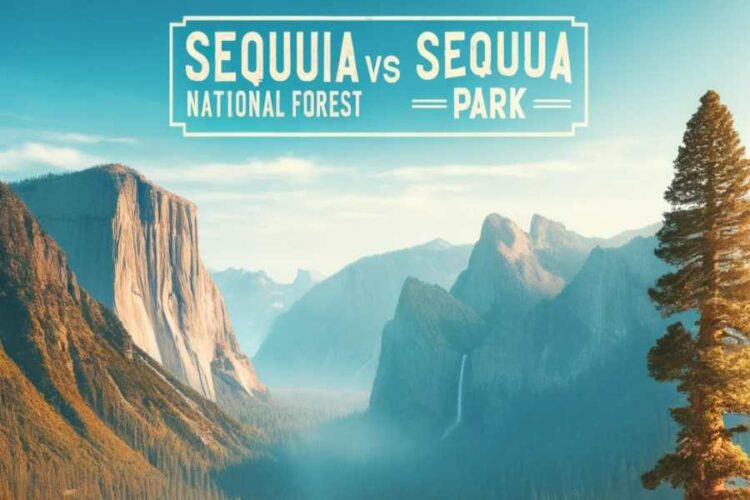Nestled in the heart of California, Sequoia National Forest and Sequoia National Park are two stunning natural treasures that often spark curiosity and admiration among nature enthusiasts. While both are renowned for their towering giant sequoias and breathtaking landscapes, they offer distinct experiences and are managed with different priorities and approaches. Understanding the differences between the forest and the park is essential for anyone planning to explore these majestic areas or simply wishing to appreciate their unique contributions to conservation and outdoor recreation. This article delves into the rich histories, diverse ecosystems, and visitor opportunities that make Sequoia National Forest and Sequoia National Park standout destinations.
Historical Background
Sequoia National Forest: Sequoia National Forest, established in 1908, spans over 1.1 million acres in the southern Sierra Nevada mountains. Its creation aimed to protect the vast forests of giant sequoias and the diverse ecosystems within. The forest has witnessed significant historical events, including the establishment of the Kern River Preserve and the development of numerous recreational facilities during the 1930s by the Civilian Conservation Corps. Over the years, Sequoia National Forest has evolved to balance conservation efforts with public enjoyment, offering a haven for outdoor enthusiasts and preserving critical habitats for wildlife.
Sequoia National Park: Sequoia National Park, established much earlier in 1890, is the second national park in the United States, following Yellowstone. The park was created to protect the giant sequoias, particularly the renowned General Sherman Tree, the largest tree on Earth by volume. The early 20th century saw significant infrastructure development, including roads, trails, and visitor facilities, primarily driven by the National Park Service. Throughout its history, Sequoia National Park has been a pioneer in conservation, implementing some of the earliest policies for protecting natural resources and wildlife. The park’s evolution reflects a commitment to preserving its unique landscapes and providing educational and recreational opportunities for visitors.
Geographic And Environmental Differences
While both Sequoia National Forest and Sequoia National Park are located in the southern Sierra Nevada, they differ significantly in their geographic and environmental characteristics.
Location and Size:
- Sequoia National Forest encompasses over 1.1 million acres and spans multiple counties, including Tulare, Fresno, and Kern. Its vast expanse includes diverse terrains, from the arid foothills to the alpine peaks, with elevations ranging from about 1,000 to over 12,000 feet.
- Sequoia National Park, which covers approximately 404,000 acres, is primarily in Tulare County. The park’s boundaries are more defined, focusing on the higher elevations of the Sierra Nevada, with its landscape dominated by towering mountains, deep canyons, and dense forests of giant sequoias.
Landscape and Ecosystems:
- Sequoia National Forest offers a variety of landscapes, including lush meadows, granite monoliths, and expansive woodlands. The forest supports a rich biodiversity, home to numerous plant and animal species, including the rare California condor and the Pacific fisher. Its ecosystems range from mixed conifer forests to chaparral and oak woodlands, providing critical habitats for wildlife.
- Sequoia National Park is renowned for its awe-inspiring natural features, such as the General Sherman Tree and the Giant Forest. The park’s landscape is characterized by dramatic glacial valleys, pristine alpine lakes, and ancient sequoia groves. The park’s ecosystems are montane, subalpine, and alpine, with significant variations in flora and fauna across different elevations. Unique environmental features include the Great Western Divide’s rugged peaks and the Kings Canyon’s deep chasms.
Flora and Fauna:
- In Sequoia National Forest, visitors can find diverse plant communities, including giant sequoias, ponderosa pines, and incense cedars. The forest is a refuge for various wildlife, such as black bears, mule deer, mountain lions, and numerous bird species.
- Sequoia National Park also boasts an impressive array of plant life, with its giant sequoias being a significant highlight. The park is a sanctuary for species like the Sierra Nevada bighorn sheep, marmots, and a variety of amphibians and reptiles. Its higher elevations support unique plant species adapted to harsher alpine conditions.
Environmental Challenges Faced By Each Area
Sequoia National Forest and Sequoia National Park face significant environmental challenges threatening their unique ecosystems and natural beauty.
Wildfires:
Sequoia National Forest is particularly vulnerable to wildfires due to its extensive areas of dry, combustible vegetation and changing climate conditions. In recent years, the frequency and intensity of wildfires have increased, such as the 2020 Castle Fire, which devastated large portions of the forest, including ancient sequoia groves. Forest management must continually adapt fire prevention and suppression strategies to protect human life and natural resources.
Sequoia National Park also grapples with the threat of wildfires, which can rapidly spread through its dense forests. The park has implemented prescribed burns and other forest management techniques to reduce the risk of catastrophic fires. However, wildfires remain a significant concern, particularly with the increasing impact of climate change, which has led to hotter, drier conditions.
Climate Change:
Sequoia National Forest is experiencing the effects of climate change, including prolonged droughts, higher temperatures, and altered precipitation patterns. These changes can stress ecosystems, making them more susceptible to pests and diseases and reducing the resilience of plant and animal species.
Sequoia National Park faces similar climate challenges, threatening its iconic sequoia trees. Rising temperatures and changing snowpack levels affect the park’s water resources, impacting the flora and fauna. The altered climate conditions also influence the seasonal patterns and behaviors of wildlife, leading to potential mismatches in ecological relationships.
Pests and Diseases:
Sequoia National Forest has been significantly affected by bark beetle infestations, which have killed millions of trees, particularly during drought. These infestations weaken the forest’s resilience to wildfires and reduce biodiversity. Forest management efforts include monitoring and controlling pest populations to mitigate their impact.
Sequoia National Park is also vulnerable to pests and diseases threatening its sequoias and other tree species. The park employs integrated pest management strategies to combat these issues, but the challenges persist, especially as climate change exacerbates pest outbreaks.
Human Impact:
Sequoia National Forest experiences considerable human impact from recreational activities, logging, and development pressures. Overusing trails, illegal off-road vehicle use, and littering can degrade natural habitats and disturb wildlife. Sustainable recreation and strict regulation enforcement are crucial to mitigating these impacts.
While protected from logging and development, Sequoia National Park still faces challenges from high visitor numbers. Heavy foot traffic can lead to soil erosion, habitat destruction, and pollution. The park employs various measures to manage visitor impact, including education programs, trail maintenance, and visitor limits in sensitive areas.
Invasive Species:
Sequoia National Forest contends with invasive plant species that outcompete native vegetation, disrupt ecosystems, and alter fire regimes. Management efforts focus on early detection, eradication, and restoration of native habitats.
Sequoia National Park also deals with invasive species that threaten its biodiversity. The park regularly monitors and removes invasive plants and implements restoration projects to support native species recovery.
Conclusion
While sharing similar names and some ecological characteristics, Sequoia National Forest and Sequoia National Park offer distinct experiences and face unique challenges. Understanding their differences in history, management, geographic features, and environmental threats is crucial for appreciating their contributions to conservation and recreation. Both areas play a vital role in preserving the natural beauty and biodiversity of the southern Sierra Nevada, and continued efforts in sustainable management and conservation are essential to ensure these majestic landscapes endure for future generations to explore and enjoy.







